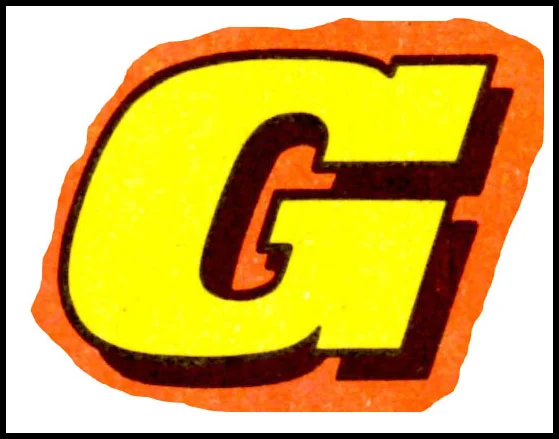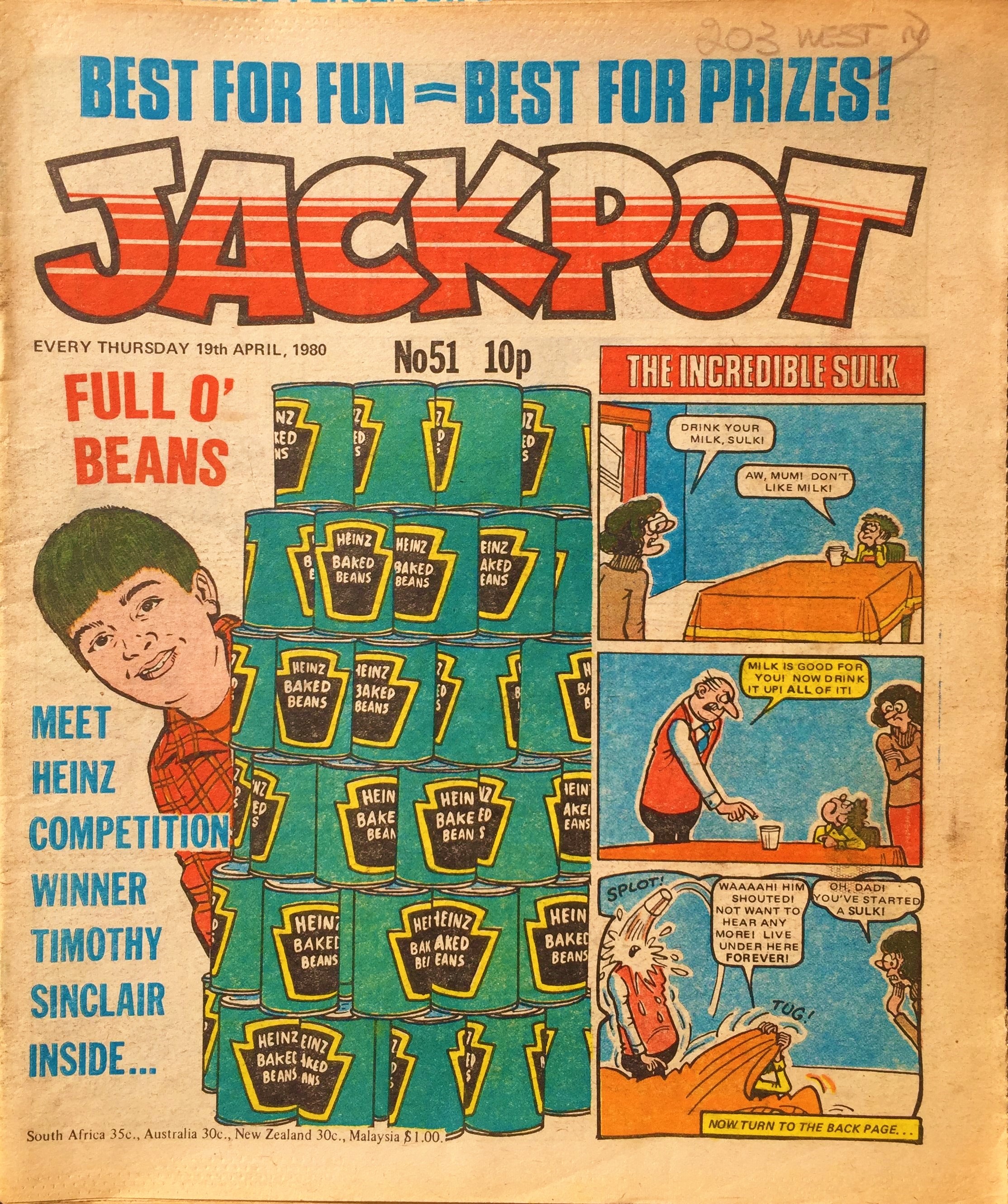On this day, 20 April 1974: Buster and Jet
Cover artwork: Angel Nadal
On this day, 20 April 1974 … Buster was already a veteran comic of nearly fourteen years, but readers like me who are more familiar with its mid-1970s to mid-1980s incarnations could be forgiven for thinking that this was a ‘classic’ edition. Its format (a tall 315x225mm) is the most obvious difference from those we know better, and then there’s the multi-panelled opening page of Buster’s Dream World on the front cover. Inside there is only a handful of strips – Faceache, Pete’s Pocket Army, Clever Dick, Bluebottle and Basher and Nellyphant – that will be recognisable to those of us who knew Buster after its mergers with Cor!!, Monster Fun and Jackpot, but it’s the nature of the line-up as a whole, rather than the titles, that I think most differentiates this era of Buster from what would follow.
There is a stronger contingent of ‘adventure’ strips among the ‘humour’ ones, for example, and in that sense Buster wasn’t too different from stablemates Lion and Valiant, nor Tiger before it became concerned only with sport. Thunder (by now merged into Lion), and Jet which had merged into Buster in 1971, also had a similar mix of thrills and fun. If anybody can tell me, I’d be interested to know if IPC operated distinct divisions of ‘humour’ and ‘boys’’ comics in the early 1970s, or whether they were all created alongside each other. Many of the artists on display here – Angel Nadal, Joe Colquhoun, Solano Lopez, Reg Parlett and John Stokes – were all regulars in the likes of Lion and Valiant, which adds to the impression that they and Buster were all of a similar flavour at this time.
I like this flavour; across all types of story there’s an escapism and spirit of adventure – whether it be Buster fantasising about ye olde days, a gang of chums forming a crime-fighting Ski-board Squad, tiny people in a giant’s world in Pete’s Pocket Army, the fantastical Fishboy and Galaxus or the POW pranks of The Kids of Stalag 41 – that just wasn’t quite as potent in later Busters and other humour comics, when storylines were more generally concerned with slapstick silliness at school and on the streets, stealing sweets and stitching up the local bully.
Sammy Brewster’s Ski-board Squad: Scott Goodall (writer), Joe Colquhoun (artist)
Sammy Brewster’s Ski-board Squad: Scott Goodall (writer), Joe Colquhoun (artist)
Faceache: Ken Reid (artist)
Clever Dick: Leo Baxendale (artist)
Rent-a-Ghost Ltd: Reg Parlett (artist)
Pete’s Pocket Army: Tom Tully (writer), Solano Lopez (artist)
Pete’s Pocket Army: Tom Tully (writer), Solano Lopez (artist)
The Kids of Stalag 41: Fred Baker (writer), Tony Goffe (artist)
Bluebottle and Basher: Leo Baxendale (artist)
Fishboy: Scott Goodall (writer), John Stokes (artist)
Galaxus: Solano Lopez (artist)
Galaxus: Solano Lopez (artist)
The Happy Family: Reg Parlett (artist)
Nellyphant: Leo Baxendale (artist)
Charlie Peace: Jack Pamby (artist)
Sam Sunn and His Daft Dog Bonehead: Reg Parlett (artist)



